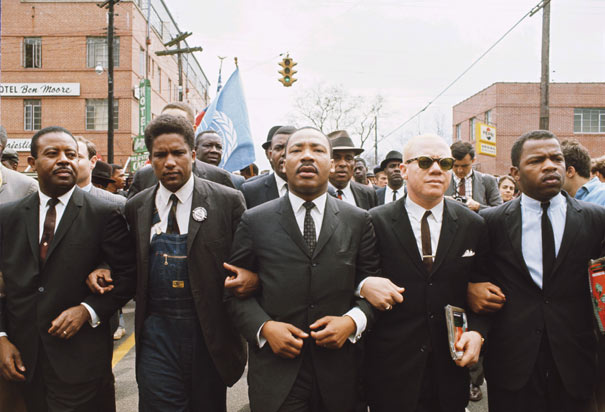We Shall Overcome, a unit on the U.S. Civil Rights Movement.
This unit will cover the U.S. Civil Rights Movement during the 1950's and 1960's.
Goals:
Students will learn about the well known leaders of the civil rights movement.
1. Rosa Parks
2. Martin Luther King Jr.
3. Malcolm X
4. Medgar Evers
Students will learn about other key figures and organizations involved in the Civil Rights Movement.
1. President Lyndon Johnson
2. Rosa Parks
3. Muhammad Ali
4. SNCC
5. Black Panthers
Schedule of the Unit.
Lesson 1: The South before the 1960s
Lesson 2: The Montgomery Bus Boycott
Lesson 3: Other movements, Little Rock High School, the Woolworth Sit-ins, The March on Washington, Selma 1965.
Lesson 4: Malcolm X, Muhammad Ali, and the Black Panthers.
Lesson 5: The results of the 1960s
Students will write a paper on their views of the movement and why it was an important time. A test will also be given over the information of the unit.
U.S. History according to Mr.Moellendorf
This blog will include lessons, assignments, references, and historical information for the U.S. History Class
Sunday, October 13, 2013
Starting a Blog is easy. One site which a teacher could use is Blogger.com. This is an excellent site which is part of the Google.com network. A teacher or student can create an blog account. There are several options on the design of the blog page.
Once signed in the teacher chooses to compose the new blog page. The teacher can customize the layout, the background images, and placement of information on the web page. Since Blogger. com is pat of the google.com network. It is easy to access to YouTube videos, google images, GMail.com, google earth, and other google tools. All of these tools can be used in order to make an interesting and creative blog or page.
For example the my page on Martin Luther King Jr. provides a photo of King, as well as a documentary video on the Selma to Montgomery March. I can also post speeches and more information on King as I teach the unit. The other great thing is I can continue to add or delete information to modify the unit every year.
Once signed in the teacher chooses to compose the new blog page. The teacher can customize the layout, the background images, and placement of information on the web page. Since Blogger. com is pat of the google.com network. It is easy to access to YouTube videos, google images, GMail.com, google earth, and other google tools. All of these tools can be used in order to make an interesting and creative blog or page.
For example the my page on Martin Luther King Jr. provides a photo of King, as well as a documentary video on the Selma to Montgomery March. I can also post speeches and more information on King as I teach the unit. The other great thing is I can continue to add or delete information to modify the unit every year.
Importance of Blogs
Blogs are a great tool of communication for teachers. There are several different ways a teacher can use a blog in the classroom.
1. Blogs can display information individual unit information. For example the three pages I have created could be used for a unit on the U.S. Civil Rights Movement.
a.The blog could not only include a review of lectures or power-points. It also could provide additional videos and links to journals or additional readings.
b. The blog could also list questions on the subject matter. These questions may be based on the readings or on the lesson. The questions could also be reflective on the subject matter. For example with the Civil Rights unit, one question may ask students to describe how feel after watching footage of the Selma to Montgomery March.
2. Blogs can also contain a schedule on when assignments are due and information about the assignments. This is ideal for students who may miss class due to other school activities or for sports.
3. Blogs can also allow students to provide feedback to the subject matter. Students could ask questions on the blog or make statements on the information that they are viewing.
1. Blogs can display information individual unit information. For example the three pages I have created could be used for a unit on the U.S. Civil Rights Movement.
a.The blog could not only include a review of lectures or power-points. It also could provide additional videos and links to journals or additional readings.
b. The blog could also list questions on the subject matter. These questions may be based on the readings or on the lesson. The questions could also be reflective on the subject matter. For example with the Civil Rights unit, one question may ask students to describe how feel after watching footage of the Selma to Montgomery March.
2. Blogs can also contain a schedule on when assignments are due and information about the assignments. This is ideal for students who may miss class due to other school activities or for sports.
3. Blogs can also allow students to provide feedback to the subject matter. Students could ask questions on the blog or make statements on the information that they are viewing.
Friday, October 11, 2013
Subscribe to:
Posts (Atom)
